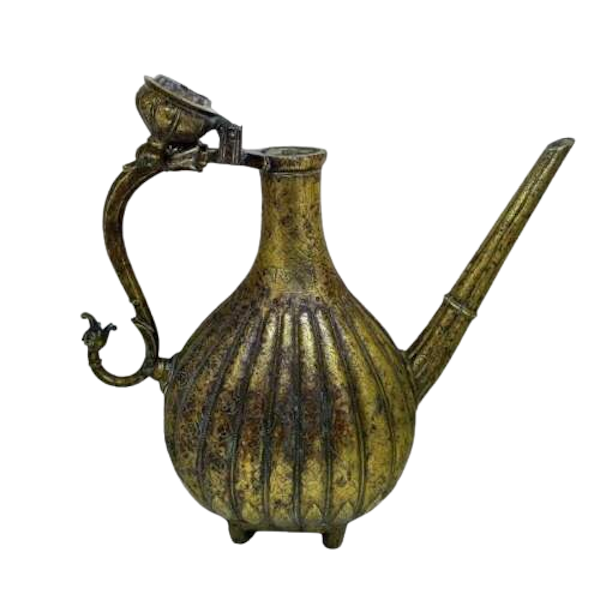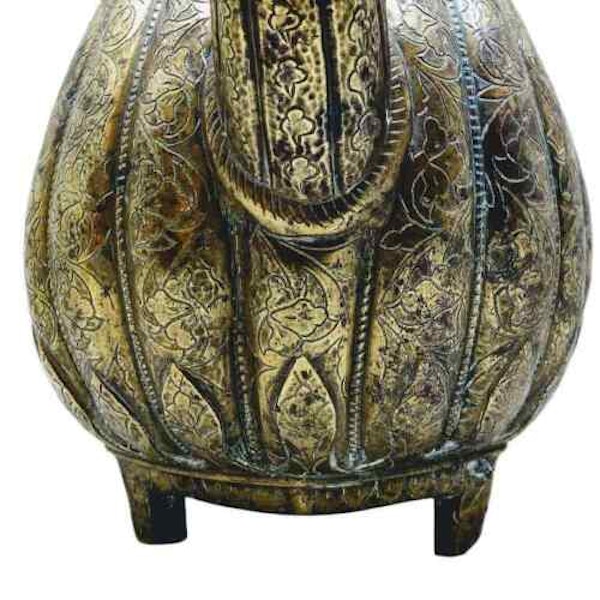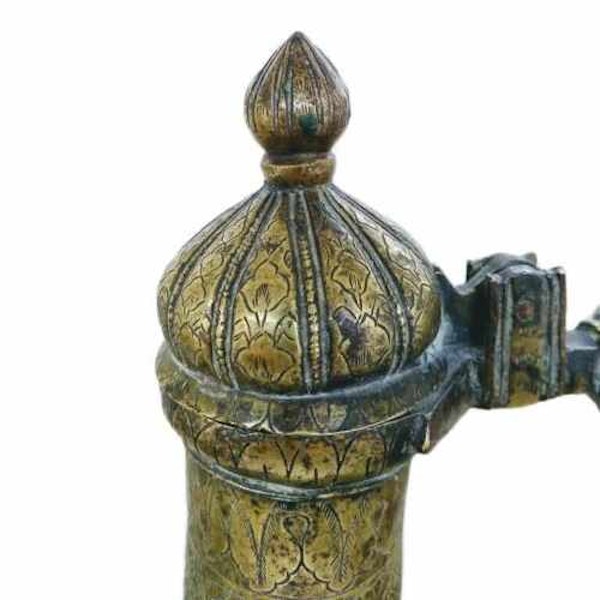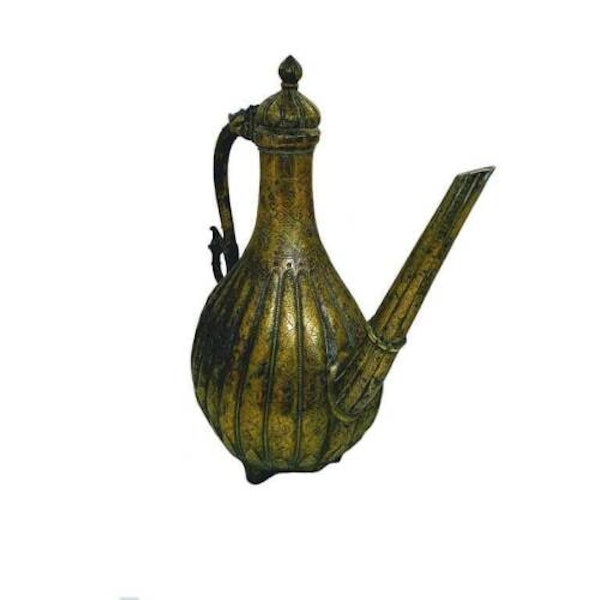Antique Bronze Ewer (aftaba), Mughal, Inscription, N. India – 18th Century
Antique Bronze Ewer (aftaba), Mughal, Inscription, N. India – 18th Century
£3,200.00
Description
This very fine and attractive antique Indian chased bronze ewer is a superb example of an 18th century aftaba and of 18th century Indian metalwork craftsmanship and expertise. Mughal Ewers, (aftabas), originated in Persia and the Middle East. The style arrived in India in the early fourteenth century. This ewer is thought to have been made in a workshop in the north of India.
The ewer has been cast and the metal is thick. The surface has been finely ornamented with chased floral motifs and scrollwork covering nearly the entire surface of the body, handle, spout and cover. The shape of the body resembles a fig which has fluted or gadrooned panels from the waist down. There is a short engraved inscription, comprising three symbols, at the waist, visible most clearly in the sixth photo. The body rests upon an integral pedestal, of hexagonal shape, which is supported by four short and sturdy brass legs. Around the base of the body there is a frieze of stiffly pointed lotus leaves raised in relief, with each leaf extending a short way up a flute and with one leaf per panel. Zebrowski says that these leaves are ‘a throw-back to the lotus thrones of medieval Hindu and Buddhist metal sculpture’.
Mark Zebrowski shows an example of a very similar, near identical, ewer although the lid is missing and there is no mention of an inscription. The ewer is from the collection of the Staatliche Museen, Berlin. He pictures the ewer at Plate 234, describing it as ‘a fine example … lightly engraved with an overall pattern of floral scrollwork’. He also cites another ewer, in the Bellak collection, which is not shown. He believes that these two were undoubtedly from the same North Indian workshop. Given the strong similarity between our ewer and the one with the missing lid illustrated in Zebrowski, it would seem highly probable that this ewer also comes from that same North Indian workshop.
The ewer is topped by a hinged and high domed lid with a lotus bud finial. When the lid is opened, it rests upon a figural mask at the top of the handle. The spout is long and linear; it emanates from the widest party of the body and angles steeply upward, ending roughly in line with the rim of the ewer. There are channels dividing the ornamentation into panels along the length of the spout. Approximately one third of the way along, a raised ring around the circumference acts as a finger hold when pouring the jug. Steadying the spout allows accurate pouring as the ewer would be extremely heavy when full of water. The ornamented surface also assists the bearer’s grip, which is particularly important with sweating hands in the savage summer heat.
The scrolling S-shaped handle has a stylized animal’s head, possibly a cheetah or a lion, to the top of the handle at a short distance from the rim of the ewer which serves both as a thumb hold and a rest for the open lid. To the end of the handle is an open-mouthed dragon, sometimes referred to as Kang style, which suggests a Central Asian influence. Stylistically, the sinuous curving line of the handle forms a complete contrast to the rigid angular spout but this was customary.
Another example, illustrated in Griggs' Jounal of Indian Art at Plate 113, is of similar shape but without the fluting to the body. It is described as ‘Northern Indian or Persian Water Vase’. No date is proferred. Although the ornamentation differs, the shape of the lid, handle, animal head thumb-piece and dragon’s head to the lower end of the handle, are all markedly similar to those of this ewer.
| item details | |
|---|---|
| Origin | Asian |
| Period | 18th Century |
| Style | Other |
| Condition | Excellent |
| Dimensions | Height 31 cms; Width 33 cms |
Product REF: 10038
















